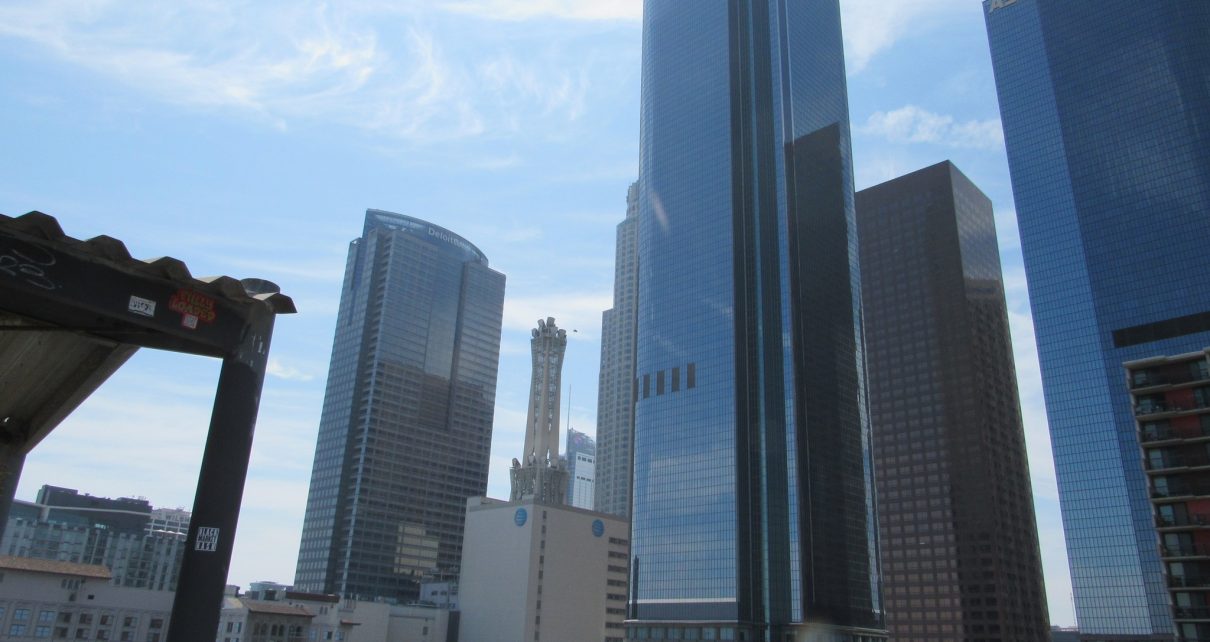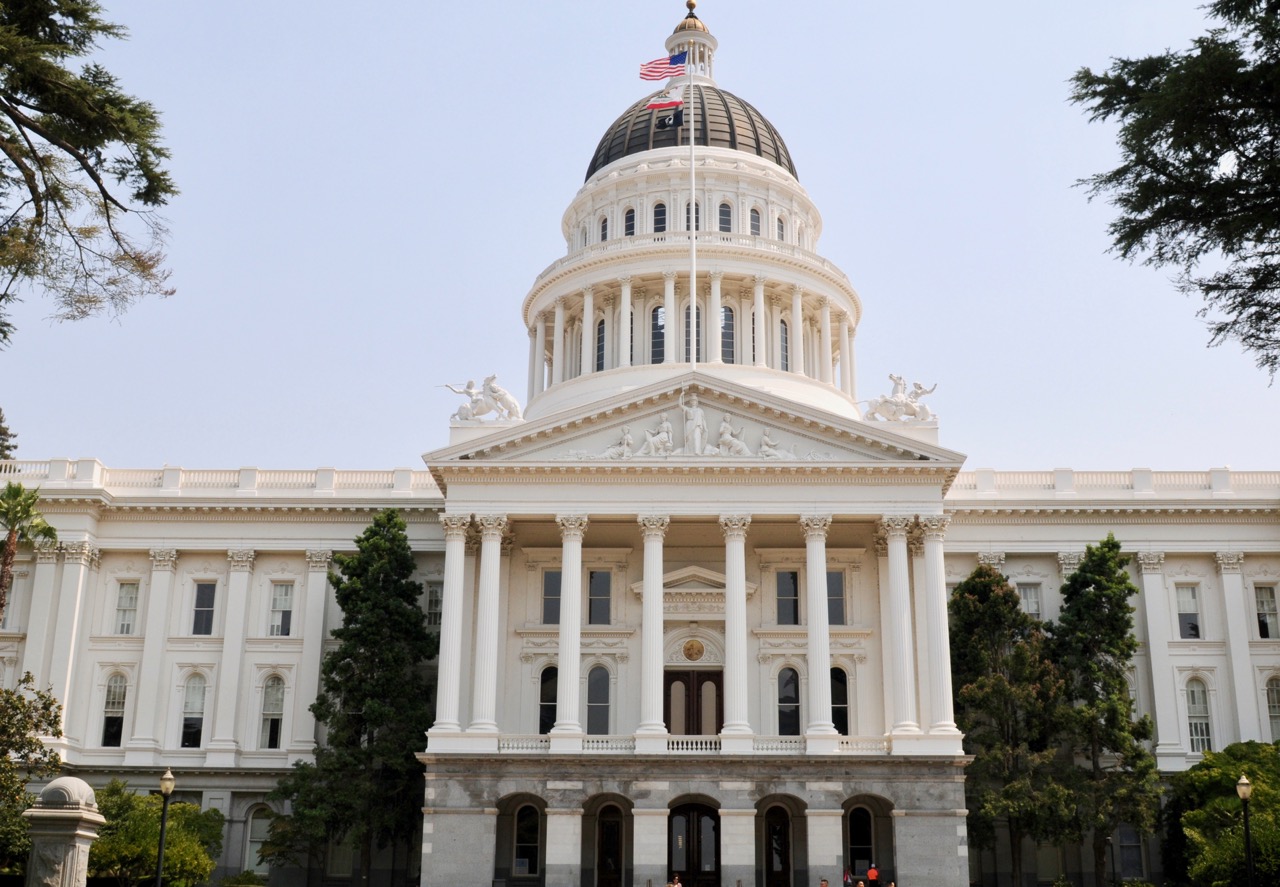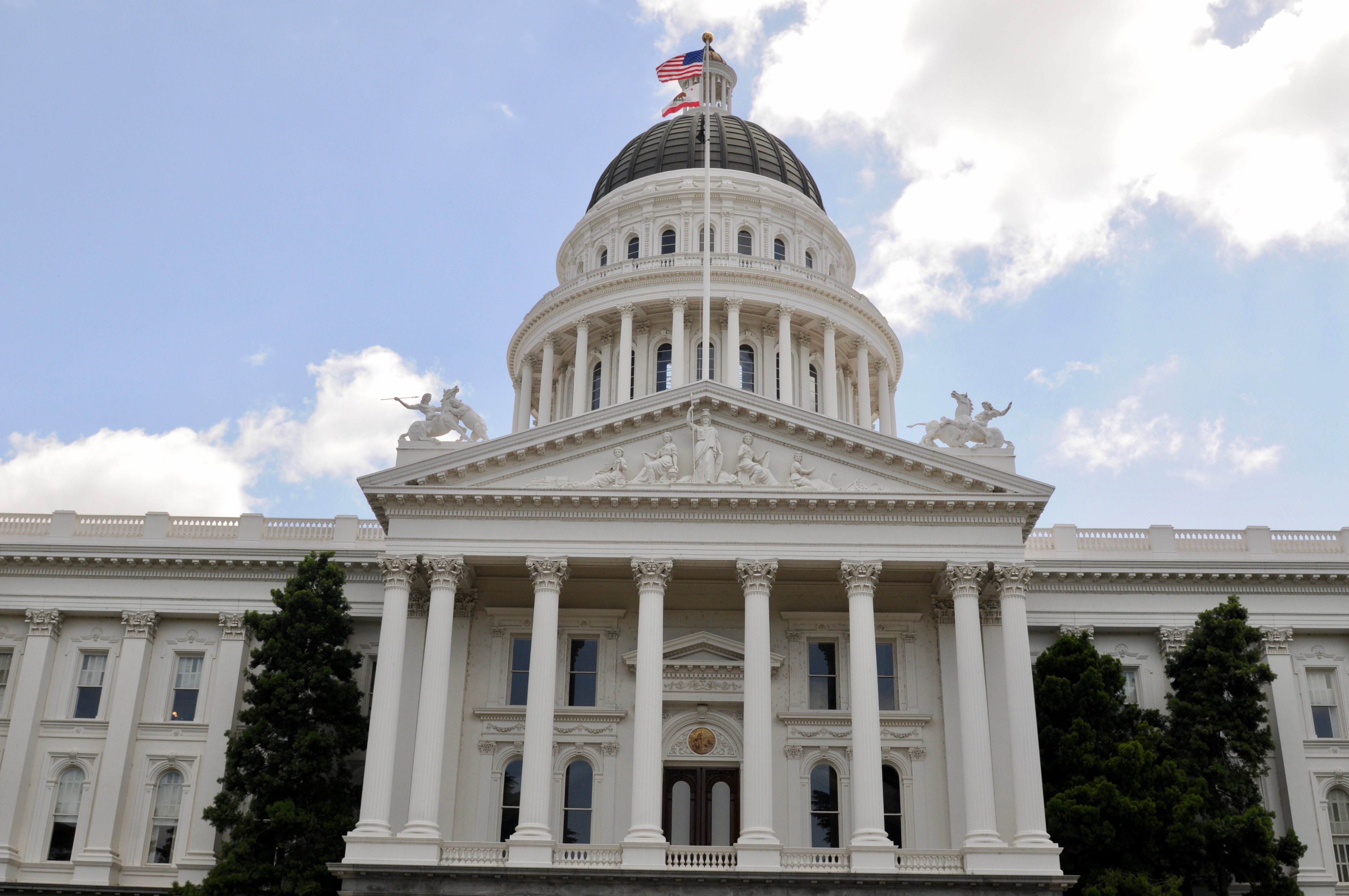
Downtown Los Angeles (Photo: Evan Symon for the California Globe)
Traffic Violence? Is That a Real Thing?
The term seems to have been coined by the ‘Your Car is the Source of All Evil in the World’
By Thomas Buckley, April 11, 2024 2:55 am
So there’s gun violence, domestic violence, gang violence – those are, sadly, real things.
Then there’s the concept that silence is violence – apparently things that rhyme are the same, like plants and pants (though grass pants would presumably be easier to hem.)
And then there’s traffic violence, which seems to be defined as anything bad that happens on asphalt or concrete, but I don’t think dirt because I don’t think the folks behind the term get out very much.
The term seems to have been coined by the “Your Car is the Source of All Evil in the World” – Streetsblog family of websites about a decade ago to describe what had hitherto been called accidents or wrecks or crashes or mowing overs or anything of that ilk.
Unlike “birthing person,” “experiencing a state of being unhoused,” or “involved with the criminal justice system” (woman, vagrant, felon, by the way,) traffic violence has not quite caught on in the public imagination.
But for the hardcore “every lane should be a bike lane” people, it is a go-to descriptor of the horrors of being forced to exist in the 21st century.
In January, a number of “safe streets” groups organized a die-in on the steps of Los Angeles City Hall. Signs were carried, flowers were placed, and speeches were made.
According to Streetsblog LA Street Racing Kills founder Lili Trujillo agonized that “growing traffic violence” is “100 percent preventable.”
No, for by definition accidents are not 100 percent preventable, though you could get close if you pry people’s steering wheels from their cold, dead hands because that’ the only way it’s going to happen.
Also, a very high percentage of pedestrian deaths on LA roads are caused by the pedestrian – it’s not a good idea to get high and wander into a street in the middle of the night, it seems. But anti-car people maintain its still the cars fault, that traffic is to blame no matter what: if there was no car, the accident, sorry, incident of traffic violence, would not have happened.
LA Councilwoman Nithya Raman called the number of traffic related deaths a “public health emergency.” She then called for everyone with a car to lockdown in their homes until the city reaches its “Vision Zero” goal of exactly no deaths related in any, way, shape or form to traffic.
Well, Raman didn’t really call for lockdowns, though one cannot help but feel that Raman and the people gathered at City Hall would absolutely love the idea. But the goal of Vision Zero really is not a single death on LA’s roadways.
Of course, that goal is impossible but it does get trotted out quite often when discussing traffic system patterns and regulations and transit policy, and, of course, was a cornerstone of the truly diabolical Measure HLA, a program inexplicably approved by voters in the March primary.
HLA will impact hudreds of miles of roadways throughout Los Angeles, adding bike and transit lanes while eliminating car travel lanes.
For example, here’s a picture of a “center running exclusive” transit plan:

Notice anything missing? A place for cars to drive.
In the run up to the vote on HLA, the city fire department came out strongly against the proposal saying it would slow emergency response times – you know, kill people.
But Streetsblog says that argument has been debunked and point to a study by Dutch Cycling Embassy (yes, it is really a thing) proving there is no problem. The study claims that having emergency personnel on planning committees, advocating for more bicycle use, and using smaller fire trucks all help mitigate the issue.
In fact, Streetsblog says emergency responders and those advocating for “traffic calming” do not. have to be be opponents .
Traffic calming helps first responders and, according to study co-author Shelley Bontje, make life better for everyone specifically because it does slow them down:
I think with a lot of things in life, we see the benefits of slowing down in terms of when slowing down in public space, there’s more attention or what’s actually going on in cities. [People want] a bit more slow travel for appreciation for public spaces, greenery, meeting other humans being able to have a conversation rather than being disturbed by a lot of traffic.
In LA and San Francisco, one supposes, slower streets mean you would have enough time to read the sign of the crazed lunatic standing on the sidewalk, so maybe that’s a bonus. Of course, they would have more time to demand your money so that’s not a bonus.
In case you were wondering about how equity is involved in this project, just know that Streetsblog LA has an editor “covering the intersection of mobility with race, class, history, representation, policing, housing, health, culture, community, and access to the public space in Boyle Heights and South Central Los Angeles.”
Of course, the evil car culture not only kills people but hinders “mobility justice.”
One of the partners in the “mobility justice” movement is America Walks, a $1.4 million a year (majority funded by taxpayers via government grants) “non-profit” that advocates for – you guessed it – walking and how Vision Zero and ideas like smart and 15-minute cities can help people walk more.
End traffic violence and increase mobility justice by traffic calming seems to be overall thrust of many of the plans like HLA.
Strip away the woke jargon and what you really find is yet another part of the effort to get people to stop driving cars, to live in more dense neighborhoods, and to let committees and planners and bureaucrats run everyone’s life.
As for Los Angeles, the one major previous experience with a “road diet” did not go terribly well, infuriating the community and contributing to the local councilman to deciding not to run for re-election.
Now this fiasco will be city wide – that’s not a road diet, that’s a road anorexic meth addict.
And just about as helpful.
- Abort Last Week: Gov. Newsom Actually Promoting Abortion - April 29, 2024
- ADA Diana Teran Booked, Los Angeles DA Gascon Faces Another Complaint - April 28, 2024
- Curiouser and Curiouser: Gascon’s Aide Charges Raise Troubling Issues - April 27, 2024





Policies like this continue to make me believe some diabolical entity is inserting brain destroying chemicals into California’s drinking water.
Interesting, Fed Up or could it be in syringes filled with serums to save your life?
Seems like kool aid comes in all forms and is very plentiful in California😉
Many thanks for covering this important issue.
This mess — and the purposeful shutdown of our freedom to travel by car, or actually travel anywhere at all —- is (relatively speaking) a Baby Godzilla now but is poised to become an army of Full-Grown Godzillas soon.
The apparently affiliated-with-Streetsblog “Streets for All” Michael Schneider was caught doing a happy-dance as he and his group celebrated the wins you speak of in City of L.A. (HLA), etc., as well as on the state legislative level. Randy Wang of KABC 790 radio (God bless him) covered this outrage yesterday, which I will post below as an addendum to this comment.
Streets for All has expanded, and has plans to further expand, first to other states, then presumably to the entire country. And in an example and confirmation of what Katy Grimes (and others at the Globe, including you, who have seen this stuff with their own eyeballs) has been trying to get us to understand for years, a special interest organization such as “Streets for All” (et al) actually WRITES the legislation. Which then some cooperative goofball state legislator puts their own name on. And off we go for E-Z passage!
Check out the link below. (You only have to watch the first 4 mins of it to see the package of legislation that “Streets for All” has written for state legislators to put their names on, including the preposterous installation of “governors” on cars so they are unable to go beyond a certain speed, even in an emergency):
“Streets for All Happy Hour”
https://www.youtube.com/watch?v=j8zob3UyqmA
Randy Wang KABC-AM 790 — The “Streets for All” Victory Lap:
https://omny.fm/shows/the-drive-home-with-jillian-barberie-and-john-ph-1/the-streets-for-all-victory-lap?in_playlist=the-morning-drive-with-jillian-barberie-john-phill
Sorry for so many posts but here is something I really must add with regard to the so-called “road diets.” It was a seriously under-reported story in 2018. The “road diet” transportation fad migrated even to Paradise, California in 2015. Anthony Watts, who lived for a time in Paradise, reported on it. This road diet (reduction of lanes from 4 to 2) may have been responsible, through the bottle-neck it created on the only remaining road out of town, for people unable to escape and thus perishing in their cars in the November, 2018 Camp Fire. This is because residents, trying desperately to GET OUT were stuck in an unmoving line of cars:
“2015 Paradise downtown street project reducing 4 lanes to 2 may have created dangerous evacuation bottleneck during #CampFire”
https://wattsupwiththat.com/2018/11/15/2015-paradise-downtown-street-project-reducing-4-lanes-to-2-may-have-created-dangerous-evacuation-bottleneck-during-campfire/
Wow! Shades of Maui.
YES.
Looks like part of the 15 minute city plan to limit your mobility. Do people ever wonder why leftists always are working to take or limit your freedom?